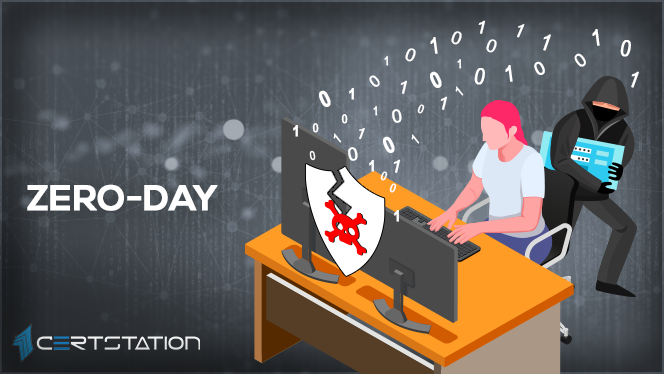
What is zero-day vulnerability?
This is a software security fault that a vendor is usually not aware of and has no solution to rectify that flaw. A zero-day vulnerability is likely to be misused by hackers and other wicked digital actors, thus putting your or your organization’s sensitive information at stake.
In the domain of cybersecurity, vulnerabilities are inadvertent faults discovered in software programs or operating systems. They can be the outcome of inappropriate computer or security configurations and programming mistakes.
How organizations can be impacted by zero-day vulnerabilities
Zero-day vulnerabilities seriously impact an organization’s important data, which results in its blemished credibility, financial losses, and other penalties by regulators. To keep your computer and data safe, it’s smart to take proactive and reactive security measures.
Your first line of security is to be practical by using all-inclusive security software that defends against both identified and unidentified threats. Then, you should be reactive and instantly install new software updates when they become available from the producer to help decrease the threat of malware infection.
Software updates let you to install essential amendments to the software or operating system. These might include adding new features, eliminating obsolete features, updating drivers, delivering virus patches, and most crucially, fixing security holes that have been exposed.
Cyberthieves and hackers can focus on the hole between the detection and patch of a flaw — a gap that, on average, purportedly takes an organization nearly 70 days to fix. In this age of digital technology, where innovative ways are continuously put together and combined into current (and sometimes, obsolete) ones, vulnerabilities are unavoidably introduced into systems that use them. In fact, such attacks are likely to surge from one per week to once per day in 2021.
How businesses and individuals can protect against zero-day attacks
Due to their nature, these attacks are intrinsically fickle and hard to prepare for and defend against. This is particularly true for organizations which have developed security measures around recognized and already-fixed flaws. A hands-on, defense-in-depth method, though, can help alleviate them.
Here are some of the other steps that organizations can adopt to protect against zero-day attacks:
1. Online infrastructures should be regularly updated
While this may appear like a responsive approach, applying fixes to systems, servers, and networks once they’re available reduces the number of faults and the exploits that target them. Organizations should also include zero-days into their patch management strategies as well as event response.
2. Email gateways, servers, and networks should be protected
Zero-day attacks can range from threats that are likely to attack diverse parts of an organization’s online setup. This is either aimed at easing the implementation of malware, deliver payloads, or carry out lateral movement, which makes it all the more important to protect them equally.
3. Principle of least privilege should be enforced
Many threats exploited authentic and open-source diffusion testing and system administration tools to effectively abuse a susceptibility. Limiting and safeguarding their use helps decrease the risks of hackers gaining access to the whole network or system.
4. Cybersecurity hygiene should be fostered
Nurturing a culture of cybersecurity, which includes growing user cognizance on phishing attacks, helps just as much as the security solutions that are arrayed by the organization.
5. Multilayered security defenses should be employed
Numerous layers of security decrease an organization’s attack system. For example, firewalls and intrusion discovery and deterrence systems, help filter malevolent traffic and network activities. Application control and behavior supervision stops doubtful executables and malware-related procedures from running, while sandboxes isolate distrustful and malicious files.
Examples of zero-day attacks
Here are some key examples of zero-day attacks that have occurred to date:
-
Stuxnet:
This malicious computer bug attacked computers used for manufacturing purposes in numerous countries, including Iran, India, and Indonesia. The chief target was Iran’s uranium enrichment plants, with the goal of disrupting the country’s nuclear program. The zero-day flaws occurred in software operating on industrial computers called programmable logic controllers (PLCs), which ran on Microsoft Windows. The bug affected the PLCs through flaws in Siemens Step7 software, causing the latter to conduct unforeseen commands on assembly line machinery, incapacitating the centrifuges used to detach nuclear material.
-
Sony zero-day attack:
In late 2004, Sony Pictures fell victim to a zero-day exploit attack that destroyed Sony’s network, leading to the release of important corporate data on file-sharing sites. The data crippled included details of upcoming films, commercial plans, and the private email addresses of Sony’s senior executives. It’s still unclear what caused such a big vulnerability that resulted in such a huge loss for the movie conglomerate.
-
RSA:
In 2011, cybercriminals employed a then-unfixed flaw in Adobe Flash Player to seek access to security company RSA’s network. The hackers carried out the activity by sending emails with Excel spreadsheet attachments to small groups of the company’s employees. The spreadsheets comprised an entrenched Flash file that misused the zero-day Flash flaw. After gaining access to the network, cybercriminals looked for important information, copied it and conveyed it to external servers they controlled. RSA acknowledged that among the data stolen was important information pertaining to the company’s SecurID two-factor authentication products, used globally to gain access to sensitive data and devices.
-
Operation Aurora:
The zero-day exploit attacked the intellectual property of numerous key technology behemoths, including Google, Adobe Systems, and Yahoo in 2009. The flaws occurred in both Internet Explorer and Perforce, with the latter being used by Google to manage its source code.
Conclusion
Today, organizations the world over are faced with a number of cybersecurity risks. And a zero-day is a tangible cybersecurity risk with a potential to disrupt and cripple organizations across the globe. In fact, as mentioned above, several organizations have fallen prey to zero-day vulnerability attacks and have had to endure massive financial losses. That said, this risk can be reduced considerably if individuals and organizations know and have the needed preparedness to deal with and stop a zero-day vulnerability in its tracks.


